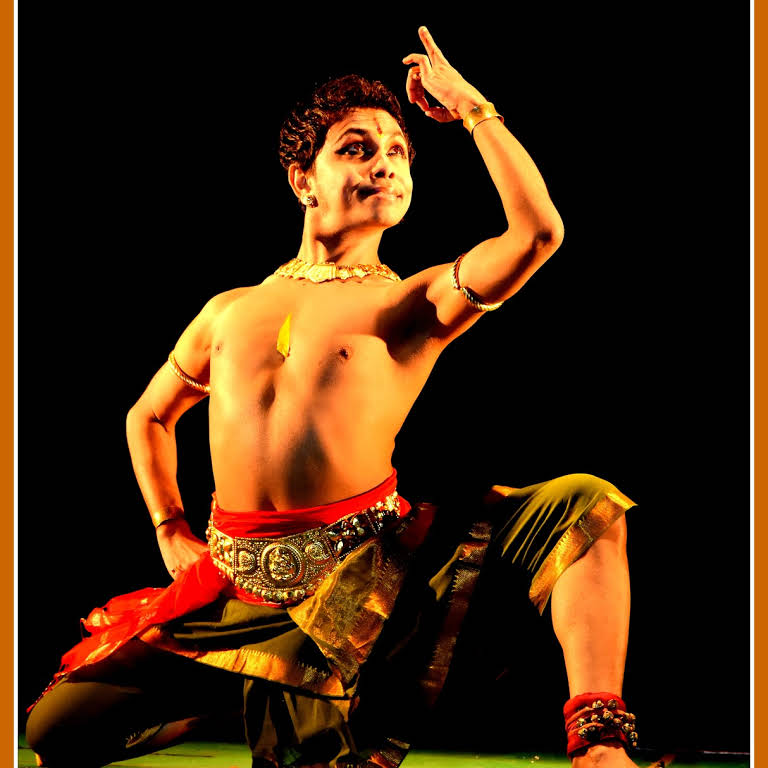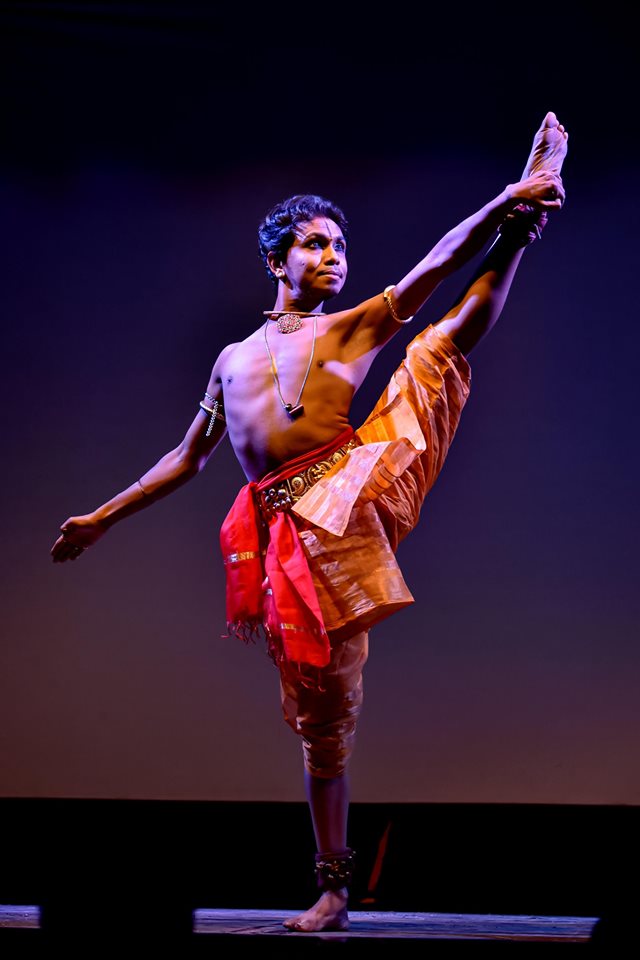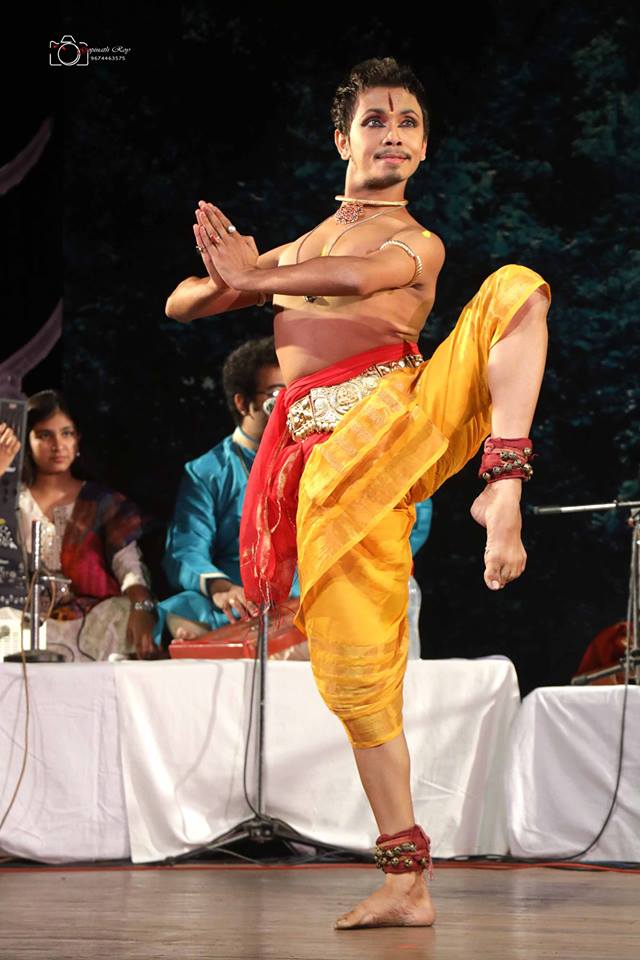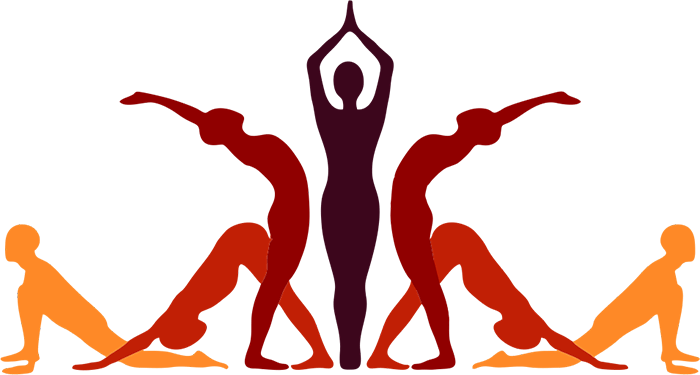Nritya Yoga – An Amalgamation of Dance and Yoga

Rahul Dev Mondal– Assistant Professor , Rabindra Bharati University
1
Bharatnatyam and yoga are the two ways that help us understand the manifestation of the Divine in the human form. Both of these wonderful art forms are product of the Santana Dharma. Which is the bedrock of Indian culture. The Natya Shastra of Bharatamuni lays emphasis on not merely the physical aspects of Bharatnatyam, but also on the spiritual and esoteric nature of this art . Both these arts are also evolutionary sciences for the overall development of the human being, from the conscious to the state of the super conscious and finally the Divine.
Bharatnatyam is a Yoga, If Yoga means Union. For surely this ancient art is one of the most beautiful and satisfying ways of expressing the human longing for union with the Divine. As an art form. Bharatnatyam demands conscious understanding of the body, mind and emotions. The sincere dancer must understand the nature of Bhakti and Gyana and the innate longing in all living creatures for samadhi or cosmic consciousness. The Divine dance of Energy in the universe, so graphically and beautifully represented by the Lord Nataraja – The Lord of Dance is the source of inspiration for the Bharatnatyam artists who can understand the deeper aspects of their art. Especially for the youth this divine art is a boon, for it prepares the body for graceful, controlled yet beautiful movements the mind into alertness and sensitivity and the emotions into purified receptors for the deepest inner longings of the human kind. Lord Shiva himself blesses those people, who take to this art, offering their profound interest, their immense devotion and their discipline as Dakshina such true Sudhaks then find that Satyam,Shivam and Sundaram – Truth, Goodness and beauty flourishing in their lives, boons granted glady by the Lord to this ardent devotees, and life turning into a beautiful journey towards enternity.

In modern time, both these elevating spritual arts have been the victim of degeneration to such an extent that Bharatnatyam is only treated as a decorative performing art and Yoga as a ‘keep fit’ exercise thus negating the very soul of these arts. The depths of the spritual concepts of this forms have been by and far lost and are being practised only at a very superficial and mundane level. However, there exists a ray of hope at all the end of this dark tunnel because slowly and steadily many of the pracitioners of these arts are awakeing their real inner meaning; many of them are taking concrete steps to bring back the real meaning into the practice of these arts, Which are actually complete ‘lifestyles’ in their true spirits.
BENEFITS OF YOGA FOR DANCERS
According to the Abhinaya Darpana of Nandikeswara, the important inner Qualities of the dancer (Antah Prana) are as follows :
“ JAVAHA STHIRATVAM REKHA
BRAHMARI DRISHTI AASHRAMAHA
MEDHA SHRADDHA VACHO GEETAM”
JAVAH – Swiftness or speed.
STHIRATVAM – steadiness.
REKHA – Line and Symmetry.
BRAHMARI – Versatility in circular movements.
DRISHTI – Glances of the eyes.
AASHRAMAHA – Ease and tirelessness.
MEDHA – Intelligence.
SHRADDHA – Confidence and interest.
VACHO – Clear speech.
GEETAM – Capacity of song.
All of these inner qualities can be developed and maintained through the practice of Yoga and in addition to the above mentioned aspects of the personality, it is important for the dancer to have numerous physical and mental abilities that can be obtained through a dedicated practice of Yoga as a way of life.
STRENGTH, BALANCE AND CONCENTRATION :

These physical qualities are essential for the dancer at all stages of their artistic career. The standing poses such as Pudahastasana, Padangushtasana, Trikonasana, Natarojasana, Virasana and its variations, are especially useful to develop strength in the legs and thighs . One legged poses such as the Natarajansana=,Ekapadasana And Ardha Chandrasana help to develop and excellent sense of balance as well as improved single minded concentration.
The hand balancing poses such as Mayurasana, Matsasana, Veishikasana and Hamsasana help to develop strength in the shoulder, arms and wrists that is essential for holding the arms and up in numerous Nritta sequences such as in the Alarippu, Varnam and Tillana.
CARRIAGE AND CENTRE

Yogasana helps develop proper carriage. Back bending postures such as Ushtrasana,Bhujangasana, and Chakrasana avoids the hunchbacks that are common in modern school going children from carrying heavy loads of books. Repeated practice of balancing poses and right and left and sides as well as from different position such as supine. Prone and the tipsy curvy
poses, the centre of gravity is improved and this leads to a perfect positioning of the body in performance for the various items .
Flexibility :
One of the important physical attributes required by a dancer is flexibility of the body. Jattis and other practices of the Shetali Karana Vyayama.spinal Twists such as Ardha Matsyandrasana and Vakrasana back banding asanas like Rajakapotasana, Chakrasana and Dhanurasana Podahastasana, Paschimottasana and Halasana ENSURE FLEXIBILITY OF THE BODY.The body can then be a supple and well- tuned instrument that allows it to perform any movement that it wishes effortlessly and gracefully while dancing. This effortlessness is essential a dancer because, When he makes any movement with strain , not only does she suffer by the sensitive rasikas or dance lovers but are also jarred out of the smooth bhramri that had been earlier effected in them by easy and flowing movements.
Co-ordination :
Practice of Suryanamaskara alter nate nostril breathing Pranayamas such as Nadi Shuddhi and Loma Viloma as well as various jattis help to develop
Right-left co-ordination and balance in the dancer.Asanas wherein the hands are joinedto the feet like Padahasthasana, paschimottasana and Akarna Dhanurasana are very useful to develophand foot as well as right left co-ordination, very essential for a smooth performance.
Yoga is isometric and internal .It is a contest between our inherent inertia and the power of the will. Paris of the body are pitted againt one another and a unique harmony of body, mind and breath is perceived.
This internal struggle when handled successfully deepens the consciousness of not only the working of the body but also of the mind and emotions.
Right – left brain function is improved by Pranayamas as right nostril breathing stimulates the left brain and vice versa. This helps to improve co-ordination between the two halves of the body and thus produce and artistic and perfect symmetry essential for a good dancer.
Physiological Function :
Yoga helps to develop all systems of the human body (cardiovascular, respiratory, digestive, eliminative, endocrine, nervous and musculoskeletal) thus strengthening, cleansing and purifying the human body so that it is brought under our conscious will. This is vital for the dancers.
Yoga stimulates and strengthens the neuro – endocrine system and it counter acts the body stiffness, changes in skin tone and hair loss, which are common problems due to glandular imbalance. Youthfulness that is essential for a dancer is the byproduct of neuro-endocrine health and this can be attained by a regular Yoga practice.
All sound health is developed which will stand the dancer in good stead even after retirement, saving them the “post retirement blues and breakdowns”.
Energy :
In the science of Yoga body movement and breath must be synchronized .The body is lifted on the incoming breath and lowered on the outgoing breath, Bhastrika of the “bellows breath” activate the solar plexus, which is an energy reservoir, as well as strengthens the diaphragm thus producing strength, vitality and endurance. Pranyamas such as Mukha Bhastrika stimulate the internal cleansing of toxins. Breath is directly related to energy levels, life span, and quality of emotions, state of mind and the clarity and subtlety of thoughts. This use of breath power with the body movements brings about revolutionary effects on the performance of the dancer. Laya Yoga practices such as the Mantralaya as well as pranayamas like the Kapalabhati , Surya Pranayama and Surya Bhedama and other practices such as Suryanamaskaram, Paschinottasanas, Nauli and Agnisara help to create an energy reservoir tht can be tapped into at will.
Strees and Relaxation :
Yoga has lot to offer in terms of stress reduction. Dancers face a lot of stress in terms of preparation for performances and high expectations from the teachers, friends, relatives and the general audience. Critics and other writers also tend to increase the pressures on the dancer.Yogic Asanas, Pranayamas and Jnana yoga Kriyas, work on the various koshas of our body and clear up all the subconscious “quirks” in our brain from the billions of years of evolutioin from animal to the human state. An understanding of these “quirks” helps us to understand our reaction to various situations and helps us to prevent our “stress response” to them. ‘Stress Relievers’ from Hatha Yoga and Jnana Yoga are of immense benefit in relieving pent up emotions and tempering our reactions to stressful situations.
Yoga has a lot to offer to dancers through the field of relaxation. In the dance world , all is PUSH, PUSH, and PUSH. There is little room for relaxation in the arena. Yoga teaches us that there has to be a balance in everything.
The Yogic concept of “Spandha-Nishpandha” or “exertion-relaxation-exertion-relaxation in an alternating rhythm and unique to the yogic art of relaxation and provides a counterfoil to the extreme stress of comp[etitive and performance related pressures, thus fostering mental , emotional and physical health.
Pranayams such as Brahmari, Pranava, Shetali and Sitkari are excellent stress relievers . Shavasana with a great variety of relaxation practices as well as the Bhajangini Mudras and Pavana Mukta Kriyas are an excellent foil against stress. Yoga Nidra and the performance of Savitri Pranayama in Shavasana can help to produce total relaxationat all levels.
A true yogi is neither an introvert, not an extrovert. He or she is an ambient, a person who is equally at home irrespective of whether he is introspecting within himself or whether he is interacting vibrantly with the external environment. Therefore to make sure that the natural introversion of Yoga is balanced with healthy extroversion, some from of extroverted activity such as sports, music or art and craft skill need to be deliberately cultivated.
Dance provides a dynamic activity to offset the static activity of Yoga and many modern yoga practitioners can benefit from such as associations. Dance also pro0vides a great source for emotional catharsis and this can help the yoga sadhaka to get over many of the emotional hung ups that continue to bother them in his or her sadhana.